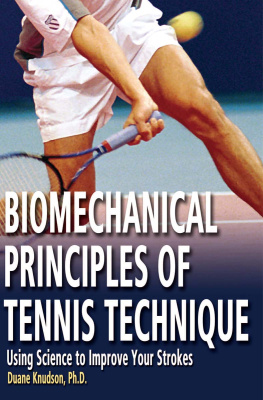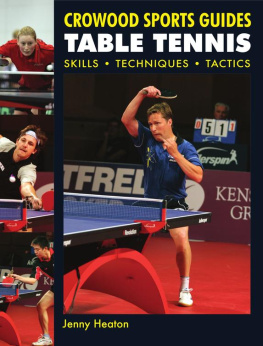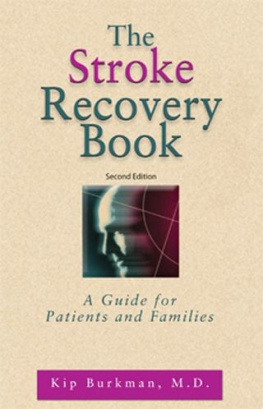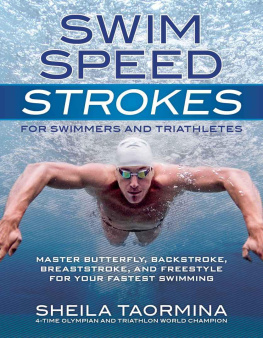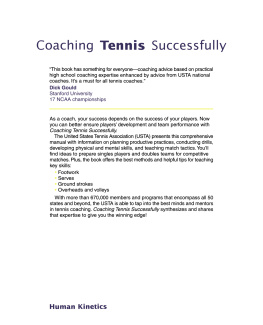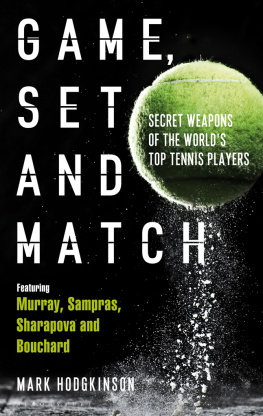
Copyright 2006 by Duane Knudson
Racquet Tech Publishing
(An imprint of the USRSA)
330 Main St.
Vista, California 92084
www.racquettech.com
All rights reserved. No portion of this publication may be reproduced, stored in a data retrieval system, or exhibited, displayed or transmitted in any form or by any means, whether digital, electronic, mechanical, photocopying, recording or otherwise, without the express written consent of the publisher.
Library of Congress Control Number: 2005938186
Cover design and illustrations by Kristine Thom
Photos courtesy of USTA High Performance and the International Tennis Federation (ITF)
Printed in the United States of America
ISBN-13: 978-0-9722759-4-1
ISBN-10: 0-9722759-4-0
CONTENTS
CONTENTS
PREFACE
The purpose of this book is to give tennis players knowledge of key concepts of biomechanics so they can make informed decisions about stroke techniques. Tennis players naturally want to maximize performance while minimizing the risk of injury. These are also the two primary goals of research in sport biomechanics.
The book is not intended to replace your tennis pro. Most certified tennis professionals have some training in the application of biomechanics to tennis strokes. This book will help you interact with your pro/coach to make wise decisions about adjustments to your game. Tennis pros will likely help you integrate the information in this book with the strategic (match plan) and tactical (specific implementation of strategy) knowledge this book does not cover. This book will also help tennis pros and coaches update their knowledge on the mechanics of strokes. Reference citations are provided for key papers, sources, and as tips to readers interested in additional information. I encourage all readers to explore these excellent sources. I apologize to some of my peers whose work could also be cited to support many points, but all supporting data would be a distraction to most readers.
Considerable research has been done on tennis strokes and other striking sports that allows for the creation of a few general principles of tennis mechanics. Tennis mechanics includes the biomechanics of stroke production and the mechanics of ball flight. This book is your introduction to these principles. On the way I will discuss examples of how you apply these principles in an injury prevention program and improving your strokes. There will also be integration boxes because biomechanical knowledge should not be applied separate from the context of the performer, task, or situation. Integration, Advantage, and Stroke Technique boxes provide links to how biomechanics can be integrated with other sport sciences or factors to improve our understanding of the game. Lets get started!
I would like to thank Crawford Lindsey and Kristine Thom of Racquet Tech Publishing and the United States Racquet Stringers Association for their valuable contributions to the book. Some of the application boxes and nice features of this book are due to their fine suggestions. There are also many tennis scientists, coaches, and physicians who have been very generous in sharing their data and expertise with me. Space does not allow me the opportunity to thank all of them individually, but they have my sincere gratitude.
Chapter One
BIOMECHANICAL PRINCIPLES OF TENNIS TECHNIQUE

A common trait of recreational players is that they try to do things with their hands to make up for their lack of quickness and positioning with their feet as they hit the ball. - Arthur Ashe
A ny meaningful discussion of variations of tennis stroke technique requires knowledge of sport biomechanics. Biomechanics is the field of study that focuses on understanding the motion and causes of motion of living things. Sport biomechanics, naturally, focuses on how humans create a wide variety of movements in sports. Fortunately for the tennis player and coach, there is a large body of research on the biomechanics of tennis movements. From the footwork to move on the court, to the adjustments in the stroke to create topspin, biomechanics is an essential tool for understanding movement in tennis.
This text will not revel in the details of this research and its limitations, but will be concerned with painting a picture of the consensus of this body of knowledge that can be applied to tennis. It is easy for biomechanical analyses to churn out hundreds of thousands of numbers representing the time varying values of a myriad of force and motion variables. What is more important, and more difficult, is the identification of key variables that are most influential and interpreting how they affect performance or injury risk. (See for a brief discussion of the differences between the levels of scientific evidence and coaching opinion.) Often the biomechanical research supports the experiential wisdom of tennis coaches, but at times the research points to interesting and counterintuitive ideas. This is not surprising given the complex mechanical properties of biological tissues, the complexity of the musculoskeletal system, and the high-speeds of the game that make most aspects of the movements truly invisible to the naked eye.
Advantage Box 1.1:Tennis Opinion and Science
Much of tennis teaching on technique is based on the professional experience of coaches. Over time this coaching opinion often tends to converge on the truth, but it also can become stranded on incorrect theories or in controversy. Different coaches often have different opinions about stroke techniques and how to best teach tennis strokes.The major weaknesses of this professional craft knowledge are its lack of control of factors that are influential and the small, systematic sample of persons a professional interacts with. All coaches are not created equal. Coach A with one year of experience with primarily beginners likely has less complete knowledge than Coach B who has ten years of experience with a wide variety of players.
Scientific research, including biomechanical studies, can provide more objective evidence. The controlled conditions of scientific research help ensure that the theories or mechanisms being examined are the only factors that are acting. All scientific knowledge, like experiential knowledge, is not created equal. Some kinds of studies or evidence are stronger than others in establishing a causal link between some technique and injury occurrance or performance enhancement.To give you an idea about the general rules or hierarchy of evidence used in medicine and science, consider the following tennis example.
Suppose a tennis coach believes that young players should not be taught open stance forehands because he believes it could overload the players arms and shoulders.This legitimate position is based on logic (growing long bones and less muscular strength of young people combine for a smaller safety factor than adults) and a philosophy of player development. In looking at the scientific support for this opinion we will work backwards from the strongest evidence back down toward the professional opinion.
The best kind of evidence would be a randomized, double-blind, long-term prospective study. Unfortunately, there are none of these studies on this topic and there will likely never be any. The practical demands of these studies make them prohibitive in tennis because they take many years, are very expensive, and would require players/coaches to select preferred stroke technique at random and not by their preference.There is also an ethical limitation that would not allow a study to run to expose players to a hypothesized higher injury risk if there were no major benefits that outweighed this risk.

